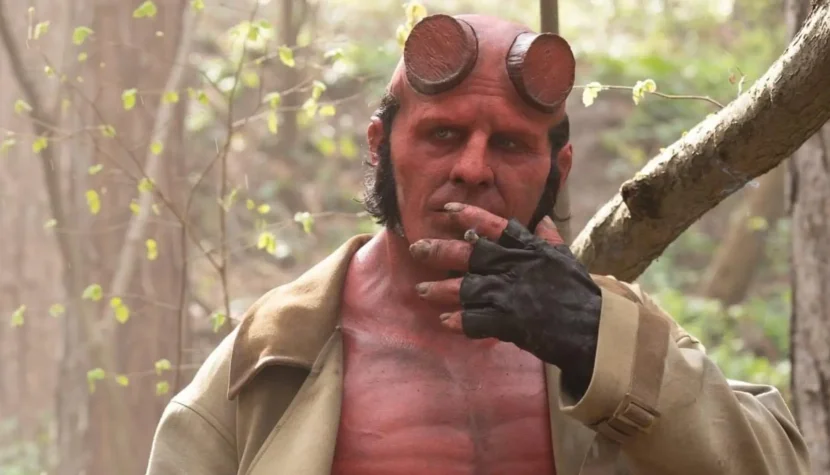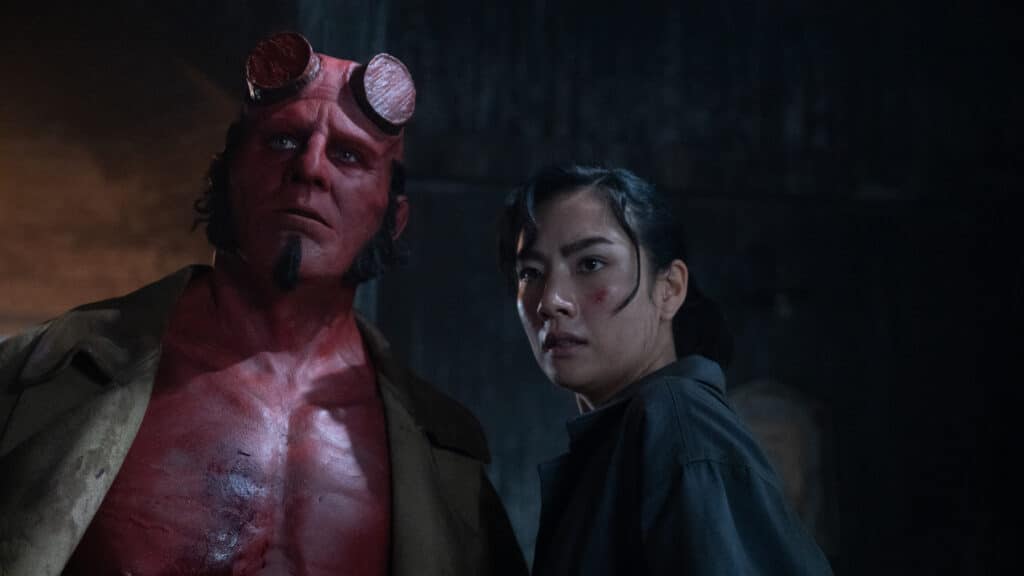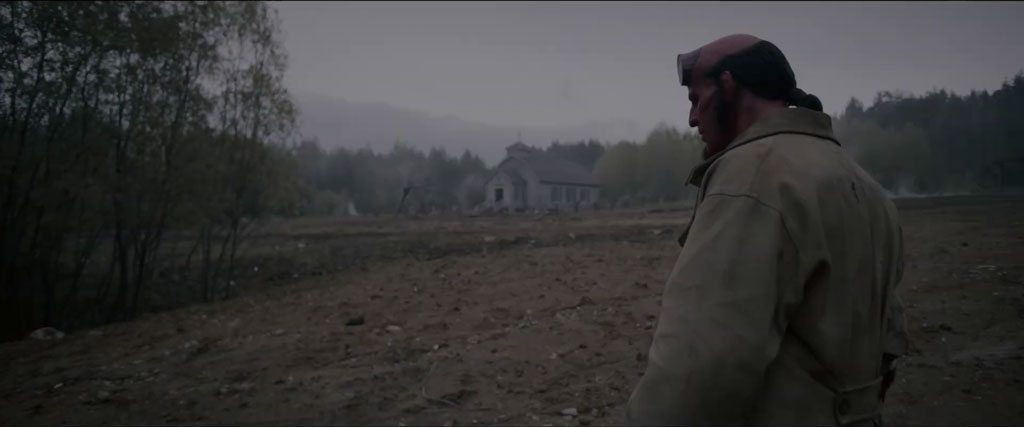HELLBOY: THE CROOKED MAN. Hellboy Returns, But in What Style? [REVIEW]

Hellboy is an extraordinary hero — a demon of the apocalypse brought to Earth by Nazis, in league with Rasputin, to serve as a “wunderwaffe” for the Third Reich, intended to bring infernal destruction upon humanity. Instead, he was raised by an American professor and began a career fighting demons as part of the Bureau for Paranormal Research and Defense. Created in the comics by Mike Mignola, this “reformed devil” character, dressed in a gray trench coat, smoking cigars nonchalantly, and chasing monsters with a large gun, seemed almost tailor-made for the big screen. However, “The Boy from Hell’s” on-screen career has been far from ideal. Guillermo del Toro adapted the comics two decades ago, creating two decent, though underappreciated, films starring Ron Perlman as Hellboy. Despite this, he was not given the opportunity to complete the trilogy, and after years of setbacks, the producers opted for a reboot directed by Neil Marshall, starring David Harbour. Following the spectacular failure of that reboot in 2019, Millennium Media returned to the drawing board for a third attempt at Hellboy’s cinematic journey, resulting in “Hellboy: The Crooked Man”.
It’s clear from the start that the new “Hellboy” has learned lessons from past mistakes. Rather than focusing on an epic narrative with a protagonist torn between humanity and his demonic roots at the center of a world-altering battle, the film, directed by Brian Taylor (“Crank”, “Ghost Rider 2”), tells a more intimate story, featuring only a few characters and confined to a small, local community. This approach stays truer to the source material, adapting a single story, “The Crooked Man” from 2008, rather than blending multiple arcs. The result is a streamlined film, free from excessive subplots, characters, and contexts that could bog down even del Toro’s masterful interpretation. “The Crooked Man” dives right into the action, eschewing lengthy introductions and background expositions — within seconds, the title appears in red lettering over a shot of a speeding train, signaling a smaller-scale spectacle focused on direct action.

“Hellboy: The Crooked Man” takes place in 1959 and follows Hellboy, along with B.P.R.D. agent Bobbie Jo Song, as they deliver a dangerous demonic spider to headquarters. They end up stranded in the isolated Appalachian wilderness, where the first house they find contains not a telephone but a child under a curse cast by a witch. Together with Tom Ferrell, a war veteran who has returned to his hometown to confront his literal and figurative demons, Hellboy and Song embark on a mission to free the locals from witchcraft and face the demon known as the Crooked Man. In this classic investigation and demon-fighting tale, there are atmospheric mountain and forest settings, but no Nazis, undead monks, or armies threatening humanity.
The new direction in Hellboy’s cinematic adaptation is intriguing not only because it allows for a more solid, focused plot but also because it closely aligns with the comics. “The Crooked Man” embraces a dark, folkloric atmosphere with frames and color palettes much closer to folk horror than the gore-infused superhero genre. Mignola’s influence is evident throughout the storytelling, which includes digressions that expand the lore via brief cutaway scenes. The framing, camera work, and visual storytelling all draw heavily from the visual style of the comics, filtered through a contemporary folk horror aesthetic (echoing works like “Apostle”, “The Witch”, and “In the Earth”). Both the narrative structure and aesthetics are well-conceived, making “The Crooked Man” perhaps the freshest and most promising take on Hellboy’s universe to date.
However, “The Crooked Man” ultimately falls short and feels painfully mediocre. The film’s execution fails to match the good conceptual ideas. The majority of the scenes, especially those meant to define Hellboy’s character by showcasing his battles with demons and dark forces, suffer from a cheap, lackluster quality, often reminiscent of low-budget B-movies. This technical inadequacy is compounded by a weak script; not everything that works in a comic translates well to the screen. The psychological depth of Hellboy — hinted at in one scene where he remarks, “My mother was a witch, though I never knew her” — feels forced in the film. This story arc likely fits better in the context of Mignola’s comics, where it resonates with established background. Here, it appears contrived, as if the filmmakers were scrambling to add some depth to Hellboy’s character, failing to provide the cohesive character-building seen in “Casino Royale” for James Bond.

The ultimate disappointment in “The Crooked Man” is the lead role itself. While Ron Perlman and David Harbour both fit the role of the demon-human with a cigar and gun, Jack Kesy — cast as Hellboy in this iteration — lacks the charisma and physical presence that the role demands. Known mostly for small roles, Kesy seems an odd choice, bringing neither the gravitas nor the style to capture Hellboy’s unique personality. The result is a Hellboy who feels generic, as if he’s merely in costume for Halloween, lacking the authenticity of a true “Son of Hell.” And in a film about Hellboy, an unconvincing Hellboy spells trouble.
“The Crooked Man” may not desecrate the Hellboy universe to the extent of Marshall’s 2019 version, but it doesn’t offer much hope that the franchise is moving in the right direction. It remains doubtful whether the path taken in this new film will continue — or if there will even be resources or interest for further Hellboy projects. The missed opportunities are disappointing, especially considering the potential of Mignola’s universe, which once again gets buried under poor execution. Perhaps the ideal approach to bringing Hellboy to the big screen requires a director with greater cinematic imagination, like del Toro, rather than Marshall or Taylor. The lack of sensitivity to both the source material and the medium of cinema is glaringly evident here. And casting someone compelling in the lead is essential because the Hellboy in this latest film is painful to watch.

